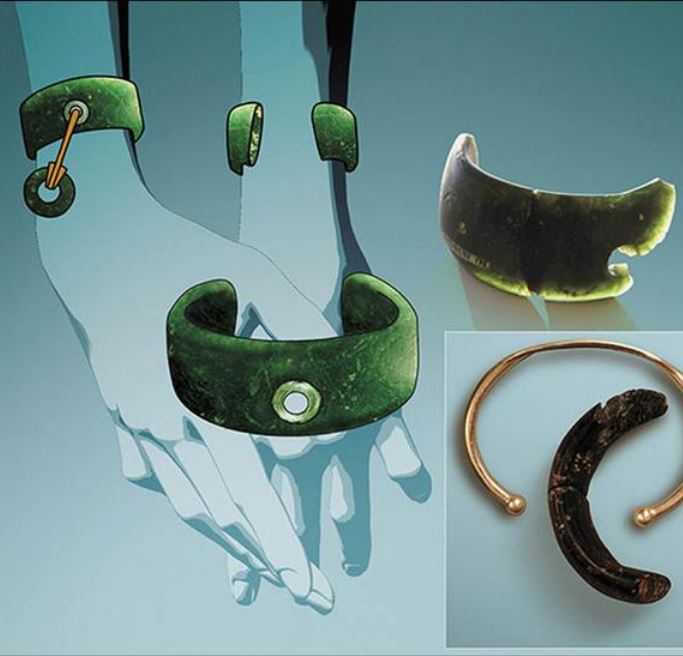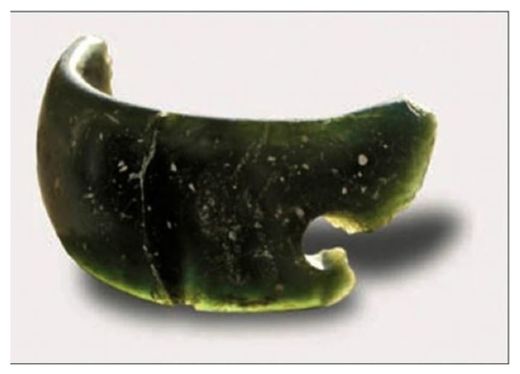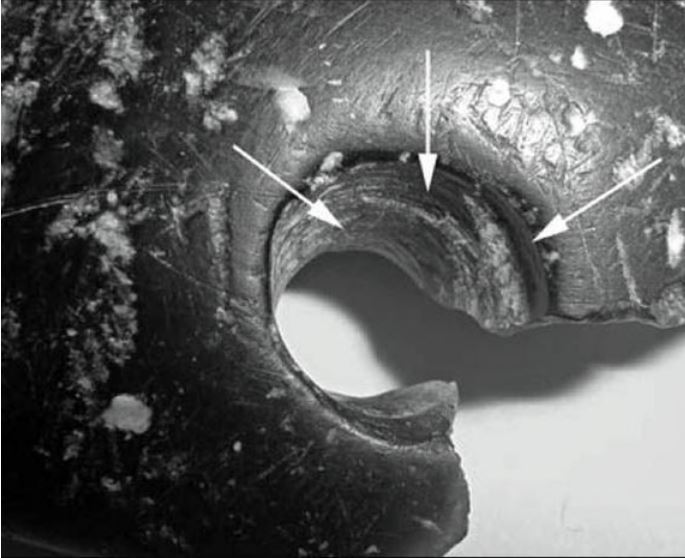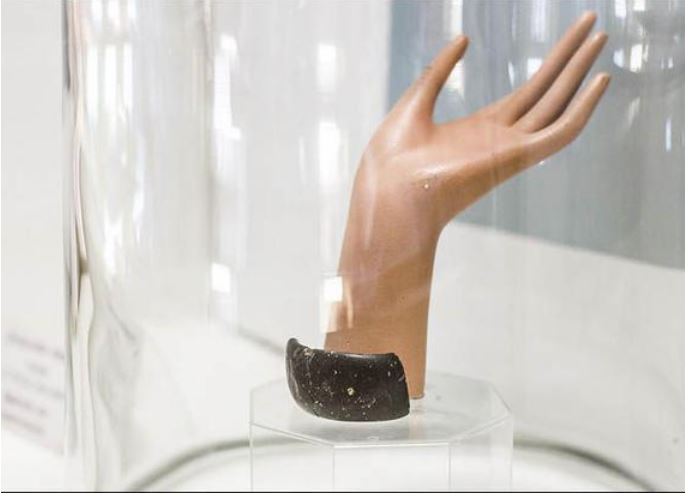The bracelet was discovered in a site called the Denisova Cave in Siberia, close to Russia's border with China and Mongolia. It was found next to the bones of extinct animals, such as the wooly mammoth, and other artifacts dating back 125,000 years.
The cave is named after the Denisovan people — a mysterious species of hominins from the Homo genus, who are genetically different from both Homo sapiens and Neanderthals.
We know that the Denisovans migrated out of Africa sometime after the first wave of Homo erectus, and well before us, Homo sapiens.
The Denisovans were unique in many ways, having branched away from other humanoid ancestors some 1 million years ago. Indeed, the recent discovery of a female Denisovan finger bone and various teeth, shows that they had no morphological similarities to either Neanderthals or modern humans.
However, tens of thousands of years later, and prior to becoming extinct, they did coexist with us and the Neanderthals for a period, and skeletal remains of hybrids, and genetic studies confirm that they also mated with our forebears and the Neanderthals.
Strangely, however, DNA evidence also suggests that, at some point, the Denisovans must have interbred with an as yet unknown and undiscovered species of humans beings.
Skeletal remains show that the Denisovans were probably far more robust and powerful than modern humans, and were, until now, assumed to be a more primitive, archaic type of humans than us.
But, the discovery of the bracelet suggests this was far from true. Amazingly, the skill involved in making this adornment shows a level of technique at least 30,000 years ahead of its time.
Until now, scientists had believed that such skills had only evolved among humans in the Neolithic period, which began at about 10,000 BC. Indeed, originally, they believed that the bracelet had somehow become mixed up with materials dating from a later period.
However, experiments have now definitely ruled that out, and they confirm that it could not have been made by homo sapiens or Neanderthals. After 7 years of analysis, the scientists are confident that the piece was made 30,000 years before the beginning of the Stone Age.

"The skills of its creator were perfect. Initially we thought that it was made by Neanderthals or modern humans, but it turned out that the master was Denisovan."Mikhail Shunkov, deputy director of the the Institute of Archaeology and Ethnography in Novosibirsk, part of the Siberian Branch of the Russian Academy of Sciences, suggested that the find indicates that the Denisovans were more advanced than Homo sapiens and Neanderthals. What is incredible is that the craftsman who made the adornment, seems to have used something similar to a modern drill.
The Siberian Times quotes Dr Derevyanko, who wrote in the Russian magazine, Science First Hand, that when they studied the diameters of the bracelet, they found that the rotational speed of the drill must have been quite high, and with minimal fluctuations.
"The ancient master" he said, "was skilled in techniques previously considered not characteristic for the Palaeolithic era, such as easel speed drilling, boring tool type rasp, grinding and polishing with a leather and skins of varying degrees of tanning."
Held in place by what they believe was a leather strap, the bracelet itself was made from a type of stone called chlorite, which could only have been imported from some 200km (125 miles) away.
The bracelet was very delicate and was probably worn at special occasions by some important person, such as a Denisovan princess. Shunkov explains;
"All jewellery had a magical meaning for ancient people. Bracelets and neck adornments were to protect people from evil spirits, for instance."Commenting on its beauty, Anatoly Derevyanko added;
"But this item, given the complicated technology and "imported" material, obviously belonged to some high ranking person of that society."
"The bracelet is stunning. In bright sunlight it reflects the sun rays, at night by the fire it casts a deep shade of green."The archeologists are reported to have also found a ring made of marble, but they have not yet disclosed any findings about it.







Not to me.
To my mind, the evidence most strongly suggests that the Neanderthals, and now the Denisovans, were much more advanced in critical ways than our ancestors. This finding is just more proof of same.
Modern human ancestors were, like today's 'top' folks, a bunch of murderous, thieving, rapacious THUGS! They slaughtered the Neanderthals, and likely did the very same to Denisovans (and anyone else they encountered along the way.) It's their past, present and future modus operandi. Look around; things haven't changed much, if at all, have they? (Except we have cell phones today. Yippee!)
And most paleontologists have actually been nothing more than paleo-apologists, always seeking to denigrate the victims of our ancestors as being 'primitive' and 'inadequate' to the task of 'survival', while heaping endless (and undeserved) praise on a bunch of murderous monsters who have never stopped raping, pillaging and slaughtering to this very day.
Most likely, these other races of beings were FAR advanced over our ancestors at numerous activities more associated with peaceful coexistence and spiritual advancement, and thus were sitting ducks for the unrelenting assaults that our evil progenitors inflicted with a relentlessness that left these peaceful cohabitants extinct, just like most animal species are heading currently due to 'modern' man and his oh-so-civilized ways.
Like I always say: "Nice guys finish last.... by design!" Wonderful old Mother Nature seems to love and favor the evil selfish scum over the kind and altruistic, every single time. We have, therefor, been 'selected' for psychopathy, it is at our core and in our innermost nature, and it is only those few among us who are filled with boundless love and unflinching altruism that represent the next evolutionary step, one away from murderous selfishness and into the other-directedness needed for the human species, nay, the entire world to survive.
Will it happen? Will humans overcome their innate, seemingly irretrievably entrenched and deeply buried programs of selfishness and exploitation? Maybe the so-called 'singularity' offers some hope of that, if we can somehow leave selfishness and egotism OUT of the design, once and for all. Finally, then we might truly earn Hamlet's famous ironic paean, "What a piece of work is man!"
But something tells me that we will instead intensify these horrible traits, making even more lethal monsters, except without even a shred of morality or decency or compassion, which might get in the way of a final, universal cosmological 'full spectrum dominance' for eternity by 'Homo Sapiens', the shamelessly hubristically self-proclaimed "Wise Man".